MHR
MANUFACTURED HOUSING REVIEW

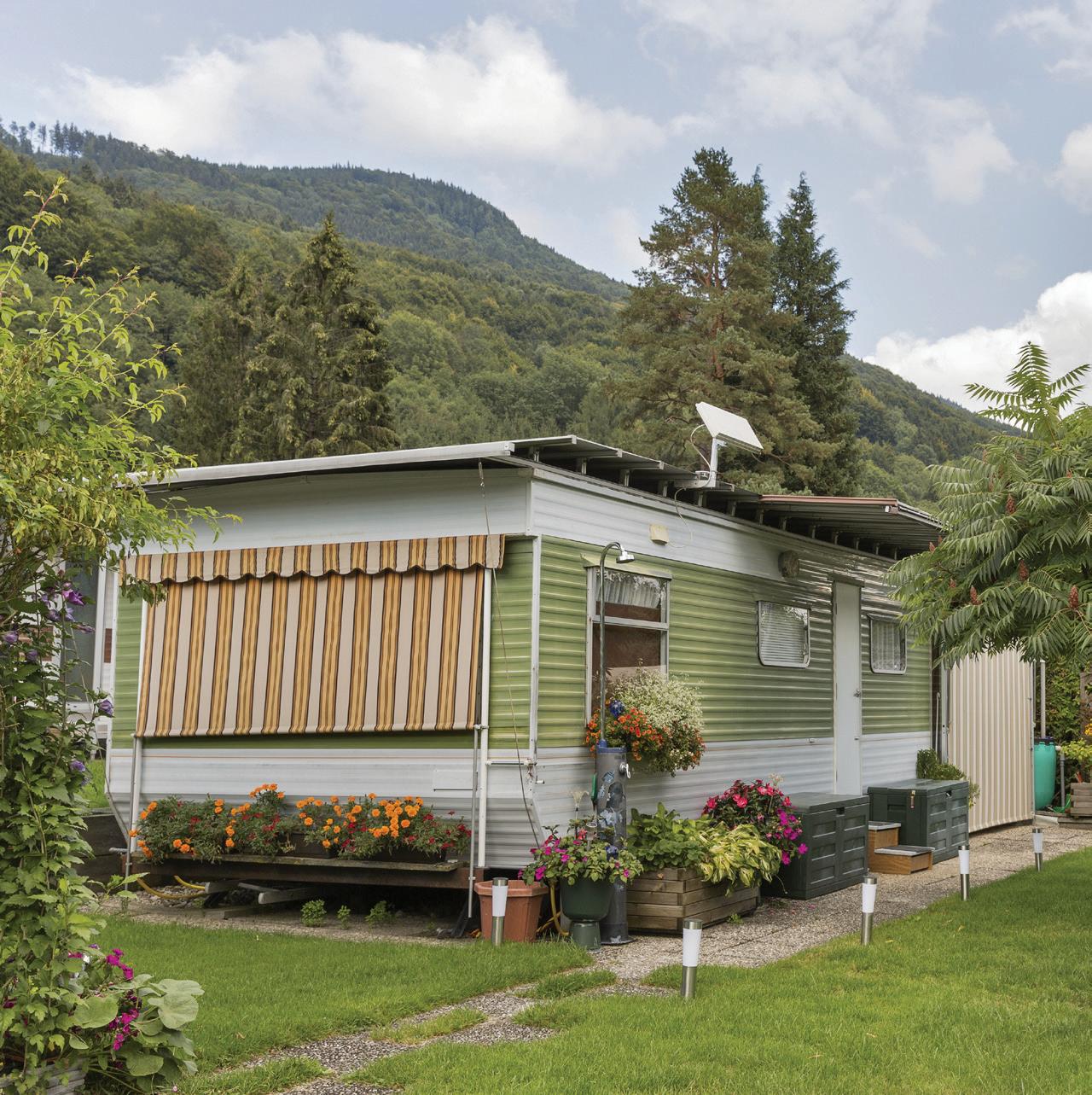
News and educational articles to help you run your business in the manufactured home industry.
IN THIS ISSUE:
Investing in MHP’s Needs to be “Win/Win”

The Two Biggest Mistakes Community Owners and Retailers Make When Insuring Their Property
The Top Ten Ways to Boost Your Community’s Resident Retention
Sponsored by:
June 2018
By Kurt D. Kelley, J.D.
By Dave Reynolds
By Frank Rolfe
By Skyler Liechty
Kimberling
Table of Contents - June 2018 ISSUE 5 The Top Ten Ways to Boost Your Community’s Resident Retention
12 The Two Biggest Mistakes Community Owners and Retailers Make When Insuring Their Property By Karie
13 Michigan Home to Nine of the Largest Manufactured Home Community Owners and Operators in the Nation
10 Community Owners: Buying New or Used Homes?
Martin
By Gretchen A. Monette
8 Why Being 1,000 Miles Away From Your Community May Be a Good Thing
15 Are Community Owners Screening Tenants Properly?
Aimee
3 Publisher’s Letter
By
4 Investing in MHP’s Needs to be “Win/Win”
By Mike Conlon
By Kurt D. Kelley, J.D. Publisher
We didn’t start the Manufactured Housing Review to simply publish industry news. Some other online and industry association publications like MHI and our state Associations do that well. Instead, we primarily created this magazine to share great business advice and experiences. It’s my observation that the lessons taught by others who have more experience, capital, entrepreneurship, and or courage are invaluable. An old saying goes, “A smart person learns from their own mistakes. A truly wise person learns from the mistakes of others.”
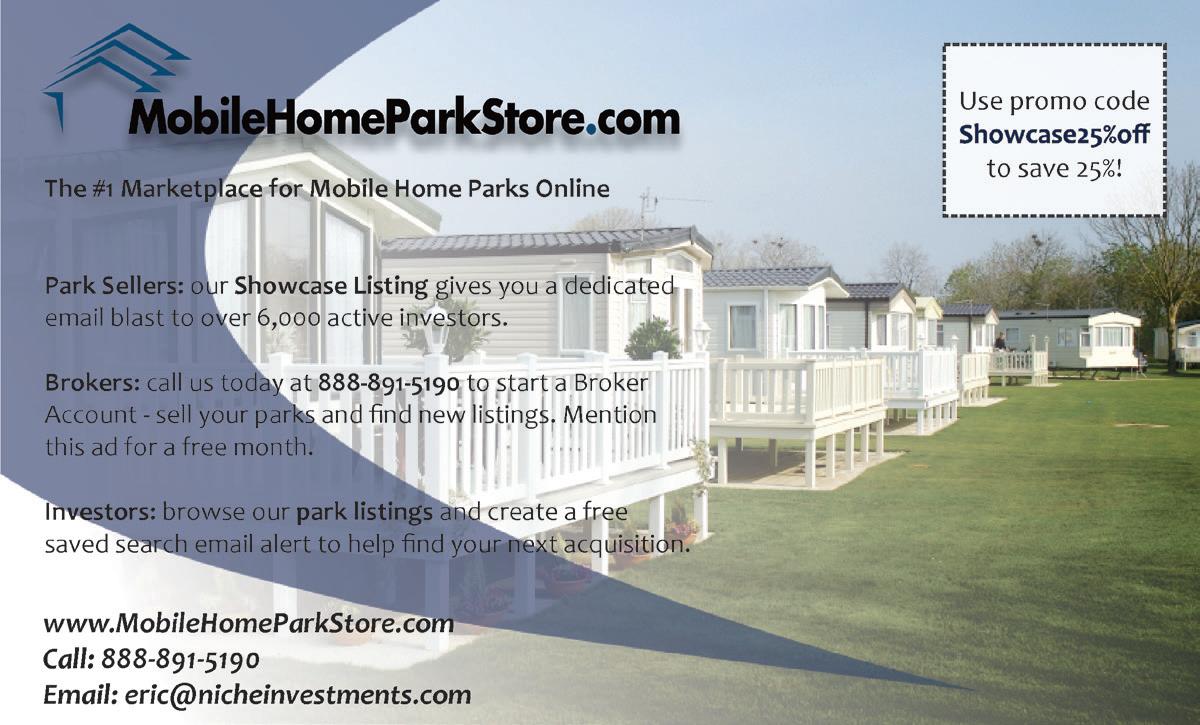
Last month’s edition offered excellent articles from basic management concepts, to accurate home site rent trends, to cutting edge loan application processes being handled by smart phone applications, to recognizing and minimizing
operational liability exposures. You’ll find this month’s edition has doubled down. As the popularity of the Manufactured Housing Review grows, new, successful, and interesting industry authors are becoming part of the magazine. And we welcome Mike Conlon and Aimee Kimberling, both long time industry leaders as new others for the Manufactured Housing Review this month.
Start turning the pages now and enjoy. And let us know what you like and what you want more of and we’ll make it happen.
Kurt D. Kelley, J.D. Publisher kkelley@manufacturedhousingreview.com

June 2018 ISSUE • 281.460.8384 • ManufacturedHousingReview.com - 3 -
Publisher’s Letter
Investing in MHP’s Needs to be “Win/Win”
Being at the National MHI event in Las Vegas in April made me think back on how much the industry has changed since I first attended in 2007. In 2007, there were lots of “Mom and Pop” investors, many only owning one park, and a couple institutional lenders who were pretty selective with whom they worked. This year was much more corporate with at least four large private equity companies, lots of groups with “$75 million to invest,” and a bunch of lenders aggressively asking for business. For those of us who have been in the business for the last decade, we need to thank our lucky stars for how fortunate we have been to ride this uptrend. The macro picture for the MHP business has never been better - park values and profits are at an alltime high, the demand for affordable housing is through the roof in all major metro areas, and the amount of ready capital available from lenders and investors is staggering. And as Frank Rolfe pointed out in his really informative article last month, lot rents are on average still 40% below where they should be in today’s marketplace. It’s gotten so crazy that local governments are now asking us to develop new MHP’s as their affordable housing options because the apartment rents have skyrocketed.
But for all the good that has happened to the industry over the last 10 years, we need to remember that one vital cog in this business hasn’t done better financially the last 10 years –our residents. We all know the middle class has pretty much disappeared over the last 20 years and wages for the bottom 50% of the country have been stagnant for decades. While this is another statistic that favors high occupancy for our industry, I believe it also brings a responsibility for all MHP owners to make sure we don’t take our residents for granted. We need to do all we can to wipe away the “trailer park” stigma that has surrounded the industry for a long time.
The best ways to remove the stigma of “trailer parks” is to make sure the roads are in good condition and the old and abandoned houses are torn out and replaced with new homes. We prefer to do re-pave all the roads and tear out the old houses within the first 90 days of purchase. These actions provide our residents something in return for an initial rent raise, which we usually do in the $25 - $50 range, as we have found it is the range that gets very little pushback from existing residents, especially when the rents are still under the market averages. We factor in the paving, tear downs, and setting of new homes into our initial cap ex budget for the park. Going forward, we like to add a playground and/ or soccer field in the first year of ownership, which is very economical, and we also enforce the rules of cleanliness for the lots, which sends a notice to the residents that there is a new standard of cleanliness required.
By Mike Conlon
The final thing we do is link each of our parks to a near-by charity. I got this idea from my friend Chris Parrish, who has a nice 300 space park in Raleigh, NC. Chris is always trying to make his park better for his residents. He has an agreement with the local Boys & Girls Club to come and pick up kids in his park a couple times/week and bring them to the Club for activities. They also coordinate activities at his clubhouse. The charities we use do a variety of activities including bringing boxes of food each month to residents, helping home owners (we have very few rentals) repair their homes, tutor the children on a weekly basis, and coordinate resident appreciation days and holiday events with our managers. We pay the charities on average between $250 - $500/month plus supplies when needed. This small amount of money has tremendous payback for us as our park turnover is significantly below the industry average, which saves us a lot of money in “turn” and resale costs. There are a lot of local charities willing to help. We tend to use smaller ones and those affiliated with local churches as we find we can communicate with them better and and they are more responsive to our residents’ needs.
So as we all look at our tax returns from 2017 and realize what a great industry this is, we need to also remember that our residents are still struggling economically and need any help they can get from us. Aligning your park with a nearby charity is a great way to provide that “extra” service to residents at a very reasonable cost.
Mike Conlon is CEO and majority owner of Affordable Communities Group, LLC (ACG) based in Cary, NC. ACG currently has 31 parks consisting of 5,050 spaces in 9 states. ACG has been investing in MHP’s since 2006.
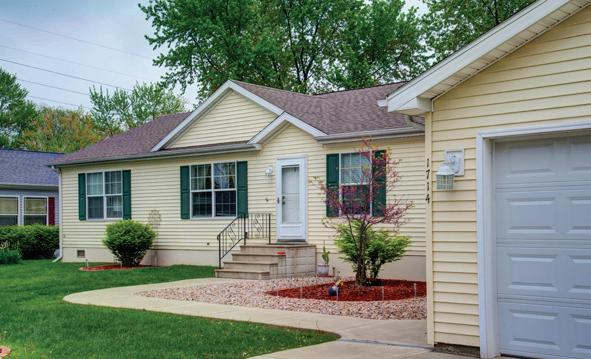

June 2018 ISSUE • 281.460.8384 • ManufacturedHousingReview.com - 4 -
The Top Ten Ways to Boost Your Community’s Resident Retention
Benjamin Franklin once said “an ounce of prevention is worth a pound of cure”.
Although he never owned a manufactured home community, Franklin had the right idea. When you think about the cost of replacing a resident in your community, you quickly realize that every owner’s job #1 should be to make sure that nobody ever leaves. So how can you boost your community’s rate of retention? Here are my top ten suggestions.
Make your entry impressive
Everybody likes to live in a nice place. Yet too many communities have lousy drive-up appeal. When you don’t have a nice entry, it’s a continual reminder to residents that they don’t live in the best they can afford, and they are always comparing their home to surrounding communities that have nicer appeal. You need to make sure that every single resident is proud of their residence and the entry creates – or destroys – that first impression.
Keep your common areas admirable
It’s very hard to create an atmosphere of pride-of-ownership when your community has none. You should always make sure that all common area buildings are well-painted and all grass well-mowed and edged. One important feature that many community owners miss out on is the interior signage. Rip out all of the old rusted poles and faded signs and replace them with white vinyl posts and caps, and install new, clean signs. It’s cheap and unbelievably attractive.
Create a sense of community
Time magazine wrote an impressively favorable article on the industry last year in which the writer described our properties as “gated communities”. What the writer meant was that the resident gets much more than just a lot when they live in our sector. They get an important support and social network. I lived in a community in Hondo while I was turning it around following a tornado, and I was amazed at the level of help the community showed all residents. They had ride sharing before Uber as well as daycare and meals on wheels. How do you encourage this? Create areas that they can socialize and meet each other – things like playgrounds and simple picnic tables and outdoor grills.
Publish a monthly newsletter
We started doing this about two years ago, and it’s been extremely successful. Sure, it’s extra work, but the dividend is an actively engaged community that stays informed and feels united in their choice of residence. If you break the newsletter down into bite-sized pieces, you’ll see that producing it is not
By Dave Reynolds
really that difficult and you might even enjoy it. The normal sections are yard of the month and other awards, other community news, suggestions on preventative measures for homes (such as change air filters and smoke detector batteries), a recipe, etc.
Hire the right manager
Great managers create high-levels of retention. People like and respect leaders that are fair and have good people-skills. If your manager is not favored by the residents, it will be a daily turn-off to living there. Don’t settle – hire a manager and is a positive force in your community.
Establish an (800) help line
How do you know that your manager is doing the right thing and keeping your residents happy? How can you be sure that all repairs are quickly addressed and successfully completed? The answer is to establish an (800) help line that all residents can call when things are not going well. You can have this line answered by a virtual assistant 24 hours a day, and the information you garner is priceless.
Reinforce the value at every rent increase
We all know that the lot rents in manufactured home communities are ridiculously low nationwide. But don’t just raise them without giving visual support for the raise. Send your residents a bar graph showing the median home price and average apartment rent vs. your lot rent with all increases, and it will be obvious to residents what a great deal they’re getting.
Fairly enforce collections
It’s simply not fair for some residents to pay their rent promptly and others to skip it altogether. Some managers pick their favorites and the whole community knows that they can get away with making partial payments. The only fair way to enforce collections is with a “no pay/no stay” policy that treats all residents the same and makes them feel secure in their treatment.
Maintain reliable rules
Is it fair for the owner of the home that is in perfect cosmetic condition with the well-mowed yard and waxed car to look out the window onto a home that is falling apart with grass a foot high and a car that is non-running (and don’t forget the dog tied on a chain in the yard)? Certainly not. To have high resident retention, you have to ensure that all residents make good neighbors. This all harkens back to the “gated community” nature that Time magazine described.
Create positive public relations in the greater community
One thing we have excelled at recently is positioning our communities with positive public relations in the greater
June 2018 ISSUE • 281.460.8384 • ManufacturedHousingReview.com - 5 -
The Top Ten Ways to Boost Your Community’s Resident Retention Cont.
city. We support school sports teams, donate to fire and police departments, and provide assistance in home repair to veterans, elderly and people in need. This reverberates through the greater community and creates a sense of local pride. And proud residents stay put.
Conclusion
Every community owner has the ability to massively improve resident retention if they will make the effort. Here are ten great ideas, but feel free to add your own. You hold the power to make everyone in your community a happy customer.

Dave Reynolds has been a manufactured home community owner for almost two decades, and currently ranks as part of the 5th largest community owner in the United States, with more than 23,000 lots in 28 states in the Great Plains and Midwest. His books and courses on community acquisitions and management are the top-selling ones in the industry. He is also the founder of the largest listing site for manufactured home communities, MobileHomeParkStore.com.
To learn more about Dave’s views on the manufactured home community industry visit www.MobileHomeUniversity.com.


June 2018 ISSUE • 281.460.8384 • ManufacturedHousingReview.com - 6 -
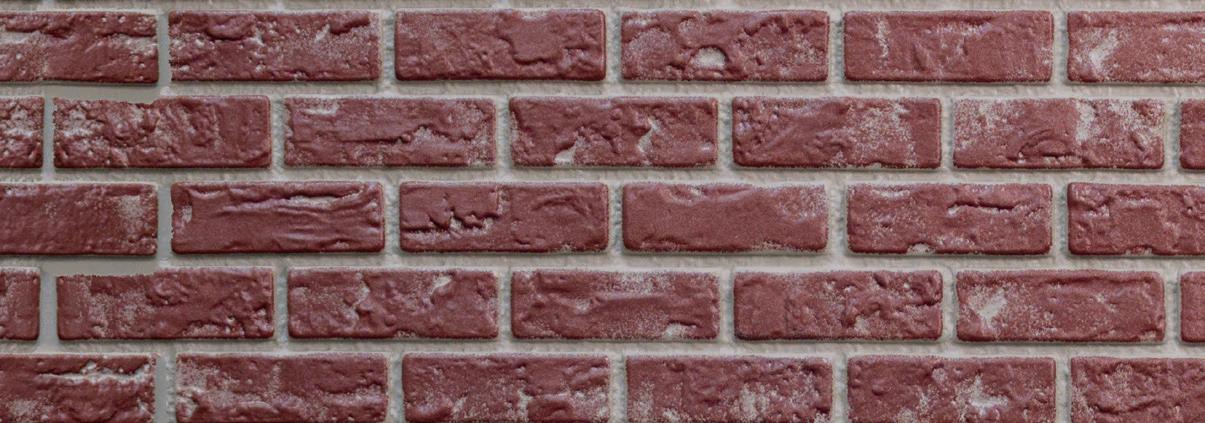
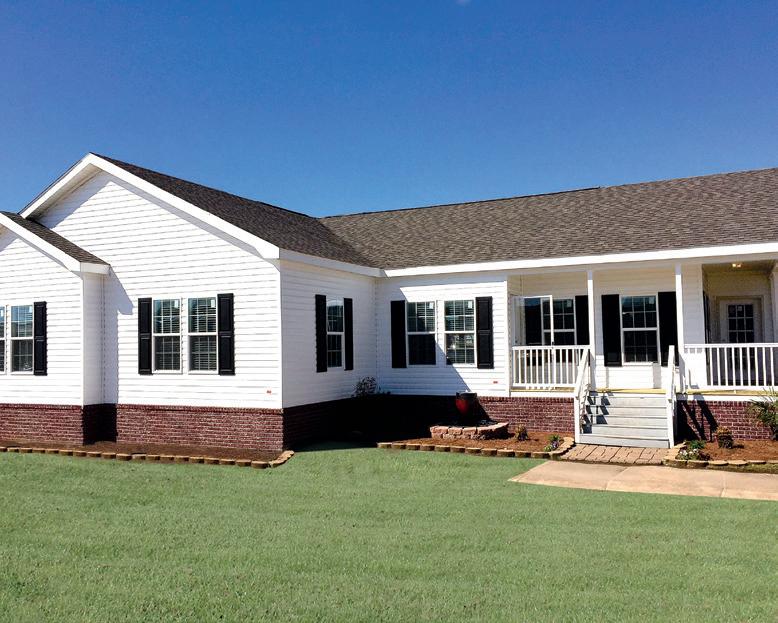
800.945.4440 www.stylecrestinc.com/masons-collection Enhanced Curb Appeal MASON’S BRICK Easy Installation
Why Being 1,000 Miles Away From Your Community May Be a Good Thing
The distance between my house and my first manufactured home community was only 15 minutes of drive time. Even worse, I decided to office out of that property for the first year, to learn the business first-hand. What a colossal mistake that was! What I learned from being that close to my community was that perhaps the best thing when you own a property is to be 1,000 miles away from it, or farther. Why?
No value-add
Contrary to what you may try to convince yourself, your physical presence at the manufactured home community you purchased has absolutely no value-add. This is not that type of business. Sure, the owner of the Italian restaurant you enjoy so much goes table-to-table to make sure that every diner is 100% happy, and it wouldn’t be the same without him. He gets there at 5 AM to make sure the freshest food is purchased, oversees that the sauces are perfect, makes sure the waiters are dressed impeccably, and then watches for any problems until closing time. But you have no such contribution. You rent land to the resident, and make sure the common areas are mowed and the utilities working. That business model does not need you to help out. The sooner you acknowledge your lack of importance, the better.
Familiarity breeds contempt
When the owner hangs around the property too much, the typical end result is that many residents hit them up for personal loans, or to let them not fully obey the rules. And many owners, given that pressure from near-professional systems users, will give in. That gets communicated throughout the property and next thing you know nobody is paying rent on time or following minimum standards. Unless you can say “no” without a second thought, and stay aloof from your residents’ constant attempts to loop your into their woes, then it’s best you stay 1,000 miles away.
Too much attention to meaningless items
In my first community, I was there every day from 9 to 5. After a couple weeks, I was completely bored. So I started overthinking everything that I did. I decided the laundry buildings would look better if they were painted green and not tan. As a result I painted them. Then I decided I didn’t like that particular shade of green, so I had them re-painted again. Did anyone care? Not in the least. The residents were perfectly happy when the buildings were tan, and thought I lost my mind when I changed the green out that second time – and they were right.
Greater focus on the systems
By Frank Rolfe
When you are 1,000 miles away, you have to focus on working your systems. And that’s what is really important for your success. Any owner would be better off focusing simply on the five gauges of the successful owner’s dashboard –collections, occupancy, property condition, water usage, and budget/actual/difference – rather than the trivial items that fog your visibility when you’re too close to the property. With no distractions, you can really give quality time to your property from 1,000 miles away, while the owner that lives nearby often gets too distracted and that only hurts the returns.
The quality of the deal is far more important the geographic proximity

This is one of the biggest reasons why you are best off being 1,000 miles away from your property: it allows you to cast a bigger net. Setting the requirement that you will only buy a manufactured home community that is near your home is extremely limiting. As a result, you’ll miss out on a ton of better opportunities that are farther away. Any owner is better off with a community that has a great location, strong infrastructure and good economics that is 1,000 miles away rather than one that is lacking in these areas but is located 15 minutes away. Finding the right property is a volume business, and you simply get more volume of deals to look at when you draw a circle 1,000 miles from your home versus one that’s only 10.
Conclusion
It’s actually easier to succeed with a manufactured home community that is 1,000 miles away than one that is close to home. Being physically separated requires you to focus on the key profit drivers and allows you to avoid petty distractions. And when you throw in the fact that you can cast a much bigger net in finding that perfect property, the evidence is overwhelming that distance and success are not correlated.
Frank Rolfe has been a manufactured home community owner for almost two decades, and currently ranks as part of the 5th largest community owner in the United States, with more than 23,000 lots in 28 states in the Great Plains and Midwest. His books and courses on community acquisitions and management are the top-selling ones in the industry. To learn more about Frank’s views on the manufactured home community industry visit www.MobileHomeUniversity.com.
June 2018 ISSUE • 281.460.8384 • ManufacturedHousingReview.com - 8 -
Capital CASH provides capital to purchase new homes including setup expenses. No money out of pocket - no payments for 12 months. Fill your vacant sites with no capital of your own.
Consumer Financing (NEW AND USED) Affordable consumer financing with 12-23 year terms is available for all credit scores on homes you own in your community. We offer financing options for 1976 homes and newer with a minimum loan amount of $10,000.
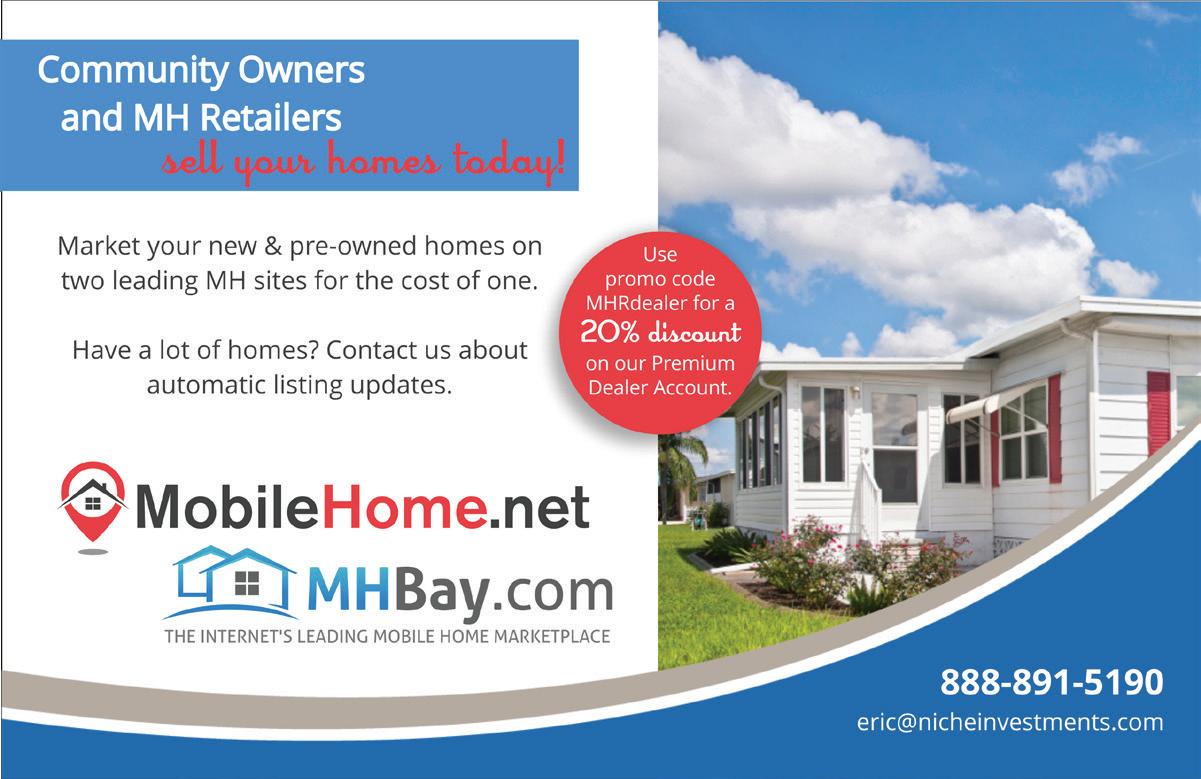
Rental Home Program Is your customer not quite ready to own their home? No problem, 21st will finance the rental home to your community, while offering you a low down payment, low interest rate, and a 10-15 year term.
Marketing Support We supply marketing materials for your community at no cost. Our staff will also consult with your team on effective marketing strategies for your community.
Customer Lending Support A dedicated 21st Mortgage MLO (Mortgage Loan Originator) is provided to assist customers through every step of the process.
Contact Us TODAY TO GET STARTED! Have Questions or Need More Information? Speak To A Business Development Manager 844.343.9383 \\ prospect@21stmortgage.com NMLS #2280 This document is not for consumer use. This is not an advertisement to extend consumer credit as defined by Tila Regulation Z. 10/2017 COM Why is CASH the best program for your community?
Outlined Outlined Outlined Outlined Outlined
Community Owners: Buying New or Used Homes? By Skyler Liechty


Recently we were asked by a client to assist them analyzing the benefits of purchasing homes for their community to fill the vacant lots. Of primary focus was the cost benefit analysis of new homes versus preowned homes. The main thrust for filling vacant lots for our client was an approaching refinance and the desire to increase the under writable cash flow. Implementation of this strategy is best done at least 2436 months prior to a refinance to show two years of financials to the lender. We analyzed the pros and cons of buying new homes versus preowned homes. The ultimate decision was new homes. For this client, that decision made the most sense for the following reasons.
First, new homes change the curb appeal of the community. While used homes that are newer than the balance of the homes in the community are a step up, they aren’t as good as new homes. Styles and looks didn’t change a lot over any given five-year time period. But new homes are different. There is no substituting the look of a brand-new home. Existing residents can tell the differences and so cane prospective new residents.
The second reason for selecting new homes is the time to get the home occupied. When a used home is brought into a community, there will be time spent on interior and exterior make-ready in most cases. While some of the underlying issues of a used home can be seen, until it’s installed and utilities are connected, it is a challenge to know the full extent of the work needed to make them fully functional. Not only is it easy for a prospect driving the community to see a new home, we have found when given the choice people opt for a new home even if the pricing is higher.
Thirdly, most prospects are focused on the total monthly payment inclusive of a home payment and lot rent. Whether a home is financed through a lender like Triad or some type of community rent to own program, the monthly payment difference between a new and used home typically is minimal.
Lastly, with increasing manufacturer financing available to community owners, the overall equity requirements tend to be less for new homes compared to used homes. Installation and set up costs are the same whether it’s a new home or used. The main differential in equity requirements is the limited availability of financing available for used homes. Additionally, used homes generally require some degree of repairs and upgrades. These in turn demand more owner equity.

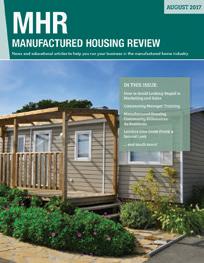
While our client ultimately decided to purchase new homes that, does not mean it’s right for every community or community owner. Some markets do not have the fundamentals to support new homes. One draw back to new homes is the lead time to manufacture the homes. It can take 4 to 20 weeks depending on the manufacturer from order to delivery. Despite this we strongly recommend clients look hard at new homes for their community.
Skyler Liechty is the Managing Partner of MH Park Advisors an integrated company offering property management services, consulting services, and real estate brokerage. Our mission is the help clients achieve their goals. Read more about us at www.mhparkadvisors.com You can reach Skyler at Skyler@mhparkadvisors.com
June 2018 ISSUE • 281.460.8384 • ManufacturedHousingReview.com - 10 -
To join, Contact Ms. Della Holland at 281-367-9266, ext. 110 or email at Staff@ManufacturedHousingReview.com Special Advertising rates are available for all six month or more campaigns. JOIN THE MANUFACTURED HOUSING REVIEW AS AN ADVERTISER

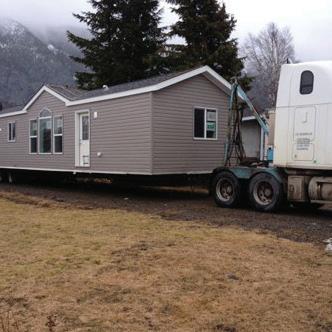
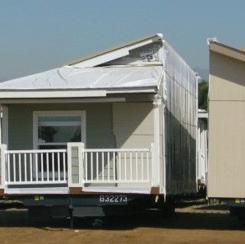




MHEI offers online training for installers and inspectors of manufactured homes to meet the education requirements of the license. MHEI provides online training to those looking to become a certified HUD installer. MHEI is the place to go for continuing education for HUD license training. Visit us at www.manufacturedhousing.org/education/ or contact Lee Krinzman at lkrinzman@mfghome.org
The Two Biggest Mistakes Community Owners and Retailers Make When Insuring Their Property
In mid June, the United States is in the last few months of the worst of the wind and hail season and at the beginning of the Hurricane Season. So now is a good time to make sure you haven’t made one or both of the most common mistakes business owners make when insuring their property.
Improperly valuating buildings and structures is the first big mistake. When valuating our buildings, the key driver of that valuation should almost always be replacement cost. By this, I mean the cost to remove the debris and often the slab of the current building and rebuild it like it was prior to its destruction at today’s construction and material costs. Acquisition cost, appraised loan value, and appraised taxable value are generally poor indicators of the actual cost to rebuild a building. Basing the square foot rebuild price upon what it was the last time you were involved in building a similar building ten or twenty years ago is an equally poor indication. The best indicator would be a recent per square foot build cost of a similar building in your area. Most moderate to basic commercial buildings cost $130/ square foot to build today at a minimum.
Here’s an example of what happens all too often to business owners when a calamity strikes. First, they’ve insured their 1,500 square foot office building for $100,000. After the building is destroyed, they are advised by contractors that the actual rebuild price will be $200,000. Presuming the
By Karie Martin
business owner has Replacement Cost coverage and a typical 80% coinsurance clause, they’ll receive from their insurance company$100,000 less a 40% penalty for being underinsured, less the deductible. That means they’ll likely have $60,000 less the deductible to rebuild.
Failing to list all the property a business owner has is the second big mistake. While community owners don’t often think of things like well houses and equipment, park power pedestals, signs, fences, and community tools and equipment, they are all subject to loss. And when a powerful storm hits, they can all be lost in a day. If you don’t know if these type of items are covered on your policy now, look at the Declarations Pages of your insurance policy. If they aren’t specifically listed, they probably aren’t.
The best time to correct any of these issues is now, before a catastrophic loss. Check your policy and call your insurance agent to make any necessary updates. Whether you are accurately insured may be the difference in whether your business survives a major calamity.
Karie Martin is the Vice President of Mobile Insurance, a specialty insurer of manufactured home communities and retailers. You can reach her directly at Karie@MobileAgency.com
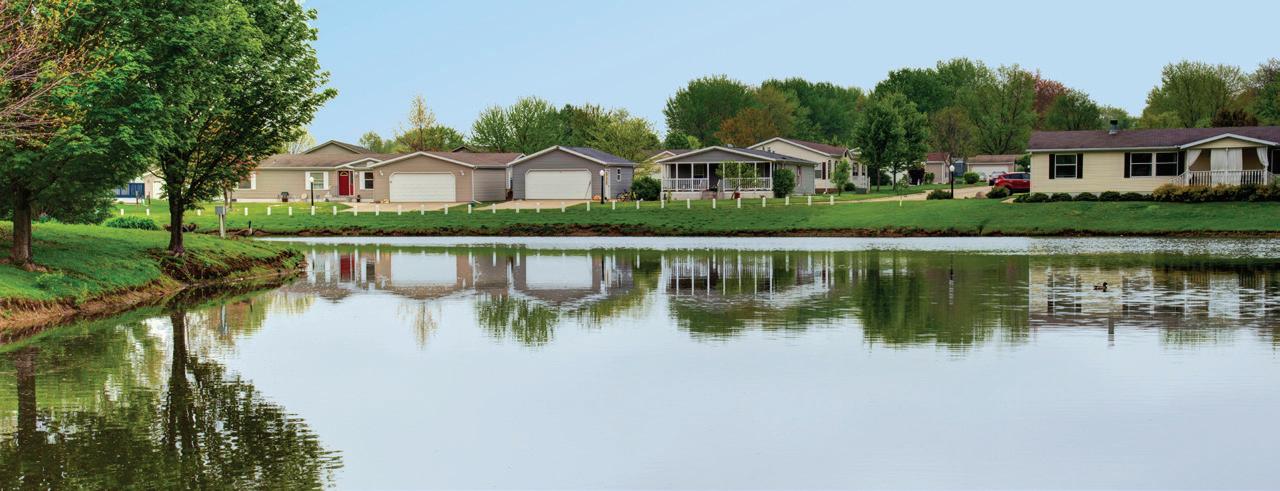

June 2018 ISSUE • 281.460.8384 • ManufacturedHousingReview.com - 12 -
Michigan Home to Nine of the Largest Manufactured Home Community Owners and Operators in the Nation
OKEMOS, MI—The manufactured housing industry is poised to have one of its best years in recent history and Michigan is responsible for a large percentage of the success, according to the Michigan Manufactured Housing Association, (MMHA).
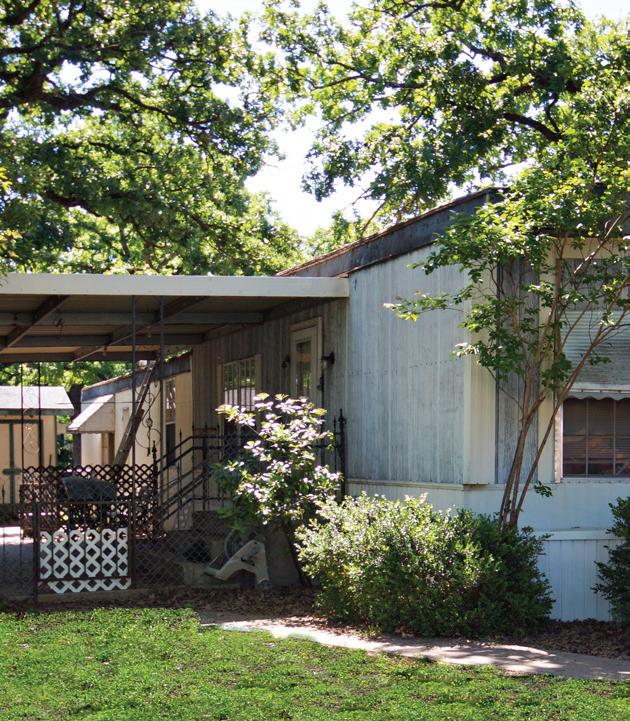
“Michigan has always been a big proponent of manufactured homes, the communities and the people who reside in them, so it really isn’t unexpected that Michigan is home to many of the largest manufactured home community owners and operators,” said Bill Sheffer, executive director of MMHA.
According to the Manufactured Housing Institute (MHI) National Communities Council, nine of the top 50 largest manufactured home community owners and operators in the United States are based in Michigan.
Michigan-based community operators are responsible for 213,244 of the 693,000 national manufactured home sites; nearly 31 percent of all manufactured home sites in the county.
MMHA members on the list include Sun Communities of Southfield, which manages nearly 83,300 home sites across the country; RHP Properties of Farmington Hills with just over 60,000 home sites; Lautrec, Ltd., Farmington Hills; Meritus Communities, Bloomfield Hills; M. Shapiro Real Estate Group, Farmington Hills and HomeFirst Certified Communities, Birmingham. Other top community operators headquartered in Michigan, include Nodel Parks, Southfield; Riverstone Communities, Birmingham and Choice Properties, Troy.
“It is an honor to be in the top 50 largest manufactured home community owners and operators in the country,” said Jeff Davidson, president of Meritus. Meritus Communities was 12th on the list. “This ranking is a reflection of the hard work and dedication the entire Meritus team has to the industry and the people who live in manufactured home communities.”
“The MMHA community as a whole should be extremely proud of this,” said Kim Scott, Director – Operations (Manufactured Housing Division), M. Shapiro Real Estate Group. “Everyone on that list, as well as everyone involved in MMHA, worked together through the leaner years to do what was best for the communities, their owner/operators and their residents. Being recognized for our successes is a testimony to all those efforts over the years.”
By Gretchen A. Monette
MMHA is dedicated to educating the public about the benefits of manufactured and modular home living and connecting people interested in finding a community or home with its members. The Michigan Manufactured Housing Association (MMHA) is one of Michigan’s oldest trade associations, founded in 1941. MMHA is a nonprofit association representing the manufactured and modular home industry in Michigan. MMHA works to improve the image of manufactured and modular housing by educating consumers, media and government about the quality, affordability, design and beauty of the homes. For more information, visit the Michigan Manufactured Housing Association at www.michhome.org or contact MMHA, 2222 Association Drive, Okemos, MI 48864-5978; 517.349.3300.
Gretchen works the keyboards for our clients, composing copy for marketing materials, blogs, social media and press releases. She is always looking for unique angles to get our clients the proper attention they deserve. Gretchen graduated from Central Michigan University with a bachelor’s degree in journalism.
June 2018 ISSUE • 281.460.8384 • ManufacturedHousingReview.com - 13 -



Page—32 GREAT RATES ~ GREAT SERVICE ~ GREAT VALUE Retailers Communities Developers Installers SPECIAL INSURANCE PROGRAMS Transporters Homeowners Tenants Investors
Are Community Owners Screening Tenants Properly?
Screening tenants properly is a key to long term financial health for any rental property. Properly tenants pay better. In addition, proper screening procedures will help landlords avoid both problem tenants and lawsuits alleging improper tenant screening. So here are recommendations from our most successful property managers:
1. Ask to see paycheck stubs
Why this question matters: The life blood of your rental property is the income derived from tenants. Although you shouldn’t discriminate as to the type of income the tenant gets, you should verify that the income source exists.
If the tenant claims to be employed, we highly suggest collecting paycheck stubs. You never know if they are being dishonest about how much they make or what their employment status is. This is a critical factor when determining whether they can afford rent. The higher their debt to income ratio the higher the risk of a tenant defaulting on rent.
Most landlords do request paycheck stubs, but 37% simply take their prospective tenant’s word for how much they make.
2. Ask to see their Social Security Card
Why this question matters: A social security card remains the best form of identification showing the state in which it was issued and the tenant’s legal name. Most importantly, should your tenant skip town and leave owing you rent, you will have a better chance of collecting that debt through a collection agency if you have a social security number. In many cases you can also use the social to trace the tenant’s new whereabouts to serve them a court summons as well.
Sure, a tenant can give you a fake social and it still may pull up a credit and background check if they’ve used that social security number consistently over many years. But it’s still a good practice.
Surveys reveal that the majority of landlords are not collecting a social security card. If you want us to verify a social for you without collecting a social security card, order an SSN Fraud Verifier.
3. Ask to see their driver’s license
Why this question matters: Like a social, a driver’s license can also provide identification, date of birth, and their most recent address. These pieces of information are crucial when conducting a criminal and eviction background search.
By Aimee Kimberling
Most landlords ask to see a driver’s license. We suggest asking for both a driver’s license and social security card to make sure everything matches up.
4. Don’t ask for any information that violates the Fair Housing Act
Why this matters: Requesting information that only relates to illegal means of tenant discrimination is potential evidence against you if you’re sued for illegal tenant discrimination.
Make sure you have Fair Housing Act notices on your website and in your offices. Also, regularly train your employees on what can and cannot be asked of prospective tenants, and what is illegal discrimination.
5. Complete a Prior Landlord Verification
It’s time well spent to contact a tenant’s last listed landlord. While all may not talk to you, some certainly will communicate relevant history even if it’s indirect. The last thing you want to do is move in a problem tenant that was just painfully evicted from their last rental unit.
Taking the time to create tenant files that are correct and current can save you incalculable thousands in the future. This is especially true when a tenant skips town, leaves owing you rent, or gives you incorrect information making it hard for you to find criminal or eviction records.
Remember, tenant screening is more than just running a credit and background check.
Maintaining a current and correct tenant file is a simple way to protect your valuable investment. Tenancies change, lives change, and circumstances can occur that may turn a longterm tenant into a potential collection problem.
By Aimee Kimberling. Aimee is the Principal at Property Eye MHP management company. Property Eye specializes in managing Manufactured Home Communities. Aimee has multiple years of experience managing MHC’s with her own company, as well as industry leading community owners RV Horizons and YES Communities.Aimee can be reached at Aimee@propertyeyemhp.com
June 2018 ISSUE • 281.460.8384 • ManufacturedHousingReview.com - 15 -
MHR MANUFACTURED HOUSING REVIEW We are an electronically delivered monthly magazine focused on the Manufactured Housing Industry. From Manufactured Home Community Managers, to Retailers, to Manufacturers, and all those that supply and service them, we supply news and educational articles that help them run their businesses. 281.460.8384 ManufacturedHousingReview.com Communications regarding any alleged offending, inappropriate, inaccurate or infringing content should be directed immediately to kkelley@manufacturedhousingreview.com along with the communicator’s contact information. Have something to contribute or advertise? Email us at staff@manufacturedhousingreview.com































